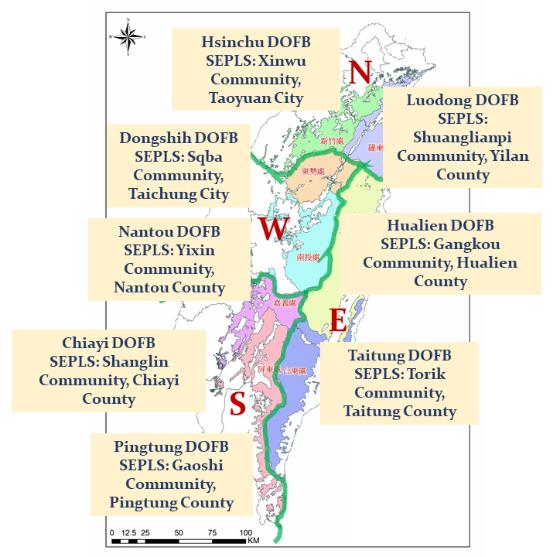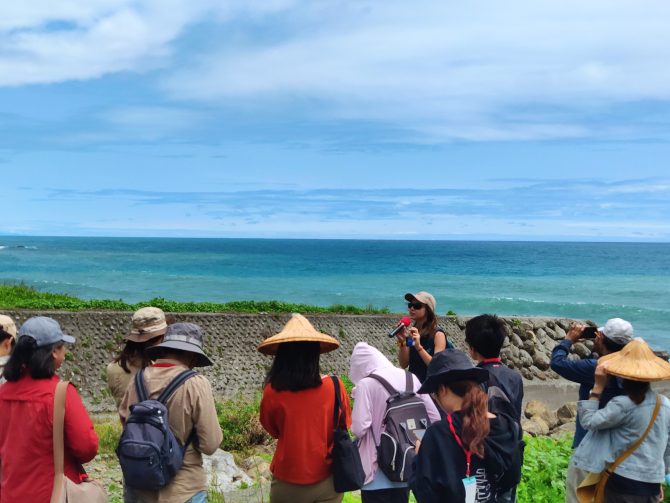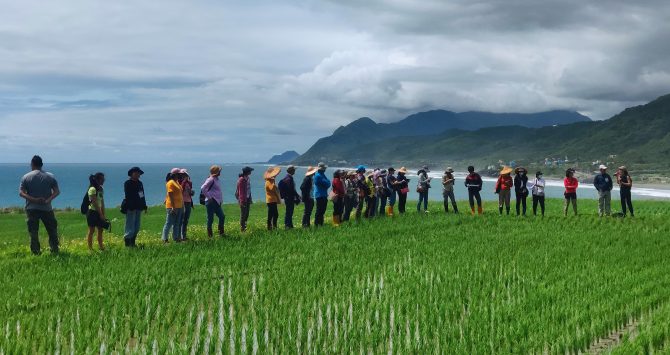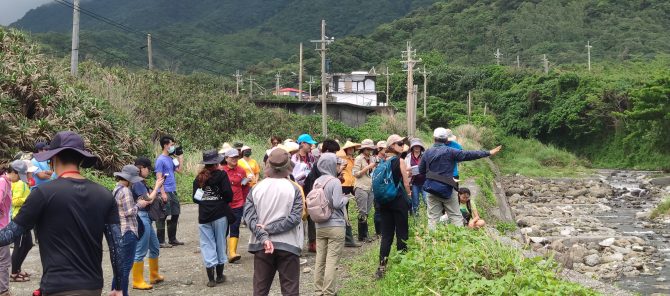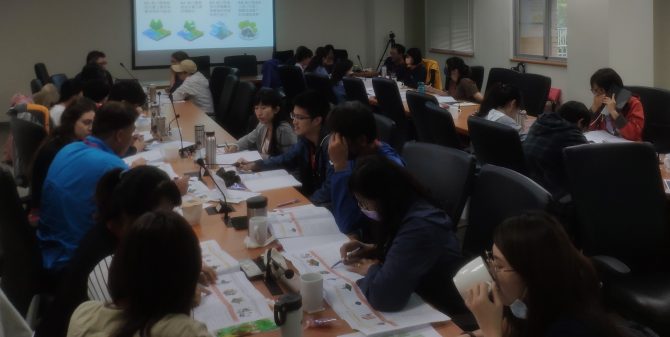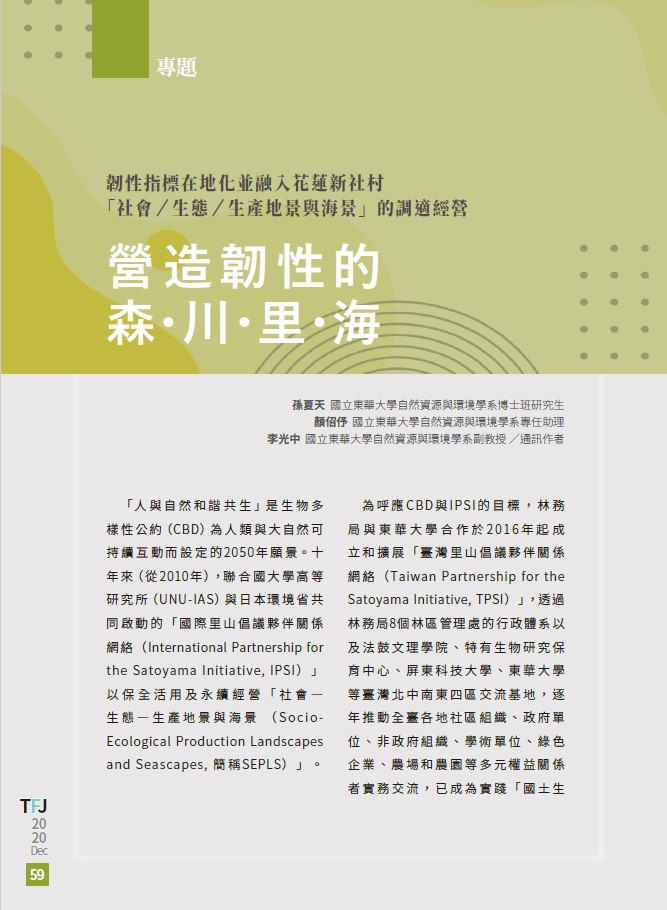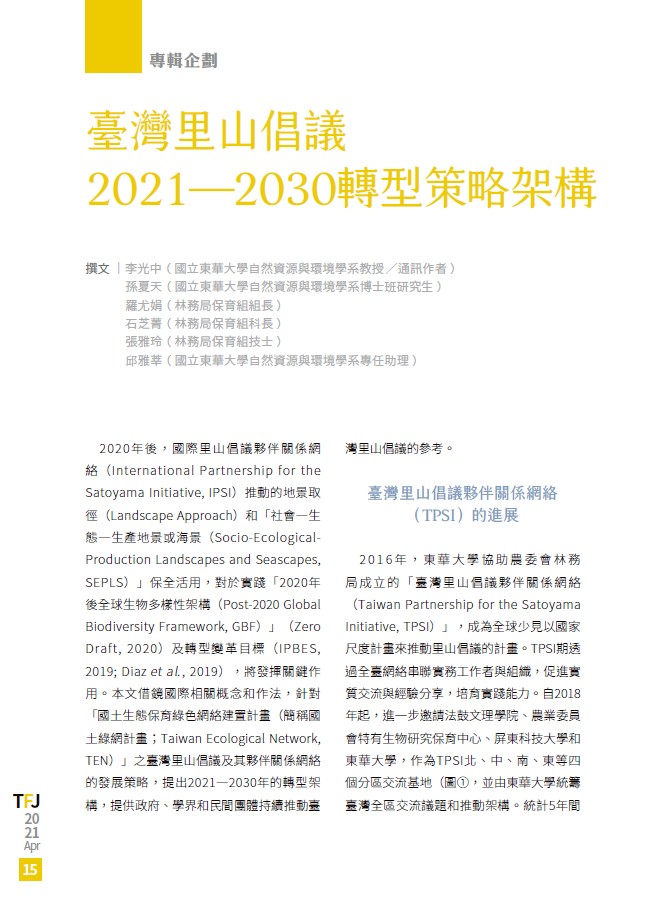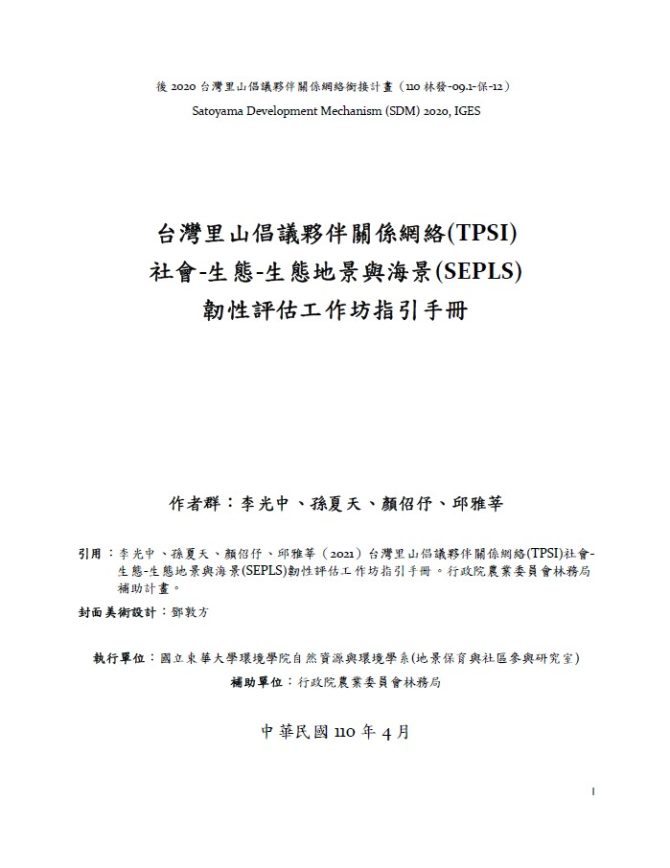2020 CHINESE TAIPEI (TAIWAN)
Development of locally-sensitive indicators of resilience as a tool for adaptive landscape management in Taiwan’s SEPLS
National Dong Hwa University (NDHU)
Partnership building
Landscape, Seascape
Overview
Taiwan Partnership for the Satoyama Initiative (TPSI) was established in 2015 as a network of satoyama-minded partners working on the revitalisation of SEPLS in northern (TPSI-N), western (TPSI-W), southern (TPSI-S) and eastern (TPSI-E) parts of Taiwan. The Forestry Bureau (FB) with its eight district offices (DOFB) has always been the main financial and institutional supporter of TPSI activities. Prior to introduction of the Project, despite existing rich experiences related to biodiversity conservation, sustainable production and local livelihoods, there was a gap in a comprehensive understanding of socio-ecological resilience in TPSI SEPLS.
Thus, the main objectives and immediate outcomes of the Project (duration: January 2021-January 2022) included: (1) develop locally-sensitive “TPSI SEPLS drafts” reflective of characteristic features of eight (8) TPSI SEPLS, (2) conduct resilience assessment workshops (RAWs) in eight TPSI SEPLS in order to (a) assess socio-ecological resilience, (b) identify environmental and socio-economic risks and resources, and (c) elicit the most urgent issues and future priority interventions.
Extended outcomes of the Project will include (planned for 2022 and after):
- local — analysis and integration of RAWs results into adaptive landscape-(seascape) management in eight case study SEPLS, development and implementation of action plans and multi-stakeholder partnerships;
- national — inclusion of RAWs as a monitoring and evaluation tool within Taiwan’s national conservation policy, Taiwan Ecological Network (2022-2025);
- global — sharing these experiences across the IPSI network and with other interested international partners.
Key achievements
The main achievements of the Project included:
- pioneer development of thematically comprehensive, locally relevant and easily comprehensible localised indicators of resilience for Taiwan’s SEPLS and a systematic implementation of RAWs on a national scale supported and carried out across the network of a government agency, the Forestry Bureau;
- a nationwide capacity-building effort that enhanced collaboration across the TPSI network, strengthened the mentorship role of TPSI regional exchange bases (TPSI-N, -W, -S, and -E), stimulated peer-to-peer learning and connectivity across the DOFB network;
- A local management committee and code of conduct were established and incorporated into the official Management Principles and Management Plan for the Cihalaay Cultural Landscape site.
- development of a series of knowledge and capacity-building materials (articles, guidebooks, video-recordings of training workshops) that will be an invaluable asset for guiding future assessments in other SEPLS across Taiwan on a SEPLS-to-SEPLS learning basis; and
- proven suitability of RAWs as a monitoring and evaluation tool within the Taiwan Ecological Network (2022-2025).
Lessons
- The SEPLS communities welcomed the Project and viewed it as an opportunity to conduct identification of local issues in a participatory way, stimulate community cohesion and communication, shared their concerns with the government representatives from DOFB, and conducted collectively brainstorming the future areas of work;
- Successful implementation was attributed to the support and interest from all Project stakeholders, pro-active facilitation efforts of the NDHU Team, flexible adjustments throughout the implementation of the Project, openness to iterative learning and knowledge co-production;
- Consideration was taken of constructive feedback (including challenges) of Project stakeholders, which is essential for future improvement and long-term continuation.
Project location
Organisation
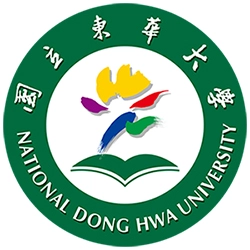
National Dong Hwa University (NDHU)
- Sector
- Academic institute
- Country
- Chinese Taipei (Taiwan)
- Website/SNS
- https://www.ndhu.edu.tw/
Related products
Localised resilience indicators for adaptive management: building up resilient SEPLS in Xinshe Village, Hualien County (Chinese))
- Publisher
- Taiwan Forestry Journal
Sun (Karimova), X.T. (P.G.), Yan S.Y., Lee K.C. 2020. Localised resilience indicators for adaptive management: building up resilient SEPLS in Xinshe Village, Hualien County. Taiwan Forestry Journal, vol. 46 (6), pp. 58-80 (in Chinese)
2021-2030 Transformative Strategy Framework for the Satoyama Initiative in Taiwan (Chinese)
- Publisher
- Taiwan Forestry Journal
“2021-2030 Transformative Strategy Framework for the Satoyama Initiative in Taiwan” article (authors: Lee, K.C., Sun (Karimova), X.T.(P.G)., Lo, Y.C., Shih, C.C., Chang Y.L., and Chiu, Y.H.) in Taiwan Forestry Journal (vol. 47(2), pp. 15-22, in Chinese)
The Guidebook on Implementation of Community-based RAWs in TPSI SEPLS (Chinese)
- Publisher
- National Dong Hwa University (NDHU)
“The Guidebook on Implementation of Community-based RAWs in TPSI SEPLS” (Annex 3, D): providing a step-by-step guidance on “what, why and how” of RAWs, preparatory work before RAWs (including locally-sensitive adjustments to “the Xinshe draft”) and post-RAWs analysis, based on the experiences of the Xinshe Initiative.
Relevant projects
Projects of the same year
Aichi Biodiversity Targets
Aichi Biodiversity Targets
-
Awareness increased
-
Sustainable agriculture, aquaculture and forestry
-
Protected areas increased and improved
-
Ecosystems restored and resilience enhanced
-
NBSAPs adopted as policy instrument
Sustainable Development Goals
Sustainable Development Goals
-
Good health and well-being
-
Affordable and clean energy
-
Sustainable cities and communities
-
Life on land
-
Partnerships for the goals
